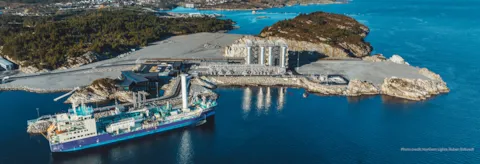
DNV’s first global forecast on the future of carbon capture and storage (CCS)
Carbon capture and storage: from turning point in 2025 to scale by mid-century

Carbon capture and storage: from turning point in 2025 to scale by mid-century
Our latest Energy Transition Outlook report highlights that the turning point for CCS is now, with capture and storage capacity expected to quadruple by 2030. Yet momentum is not guaranteed. Economic uncertainty, shifting policy signals, and underinvestment could stall progress and widen the gap between what’s forecast and what’s ultimately required for large-scale decarbonization.
DNV’s Energy Transition Outlook: CCS to 2050, released on 12 June, presents DNV’s first global forecast for how carbon capture and storage (CCS) will continue to scale across sectors and regions to mid-century and what will drive uptake.
Policy support, economic resilience, and sufficient investment are all critical to maintaining momentum. The report highlights how progress could stall without clearer mandates and stronger financial signals.
Whether you’re in energy, industry, finance or policy, the insights in this report will help inform your CCS strategy.
Get the highlights from the report and hear great panel discussions where experts from DNV and executives from leading CCS companies explore the opportunities and barriers to scale responsibly and effectively
DNV enables successful commercialization of CCS value chains by delivering insight, trust and assurance to projects and stakeholders
This white paper explores the technical, economic, operational, and regulatory opportunities and challenges of onboard carbon capture